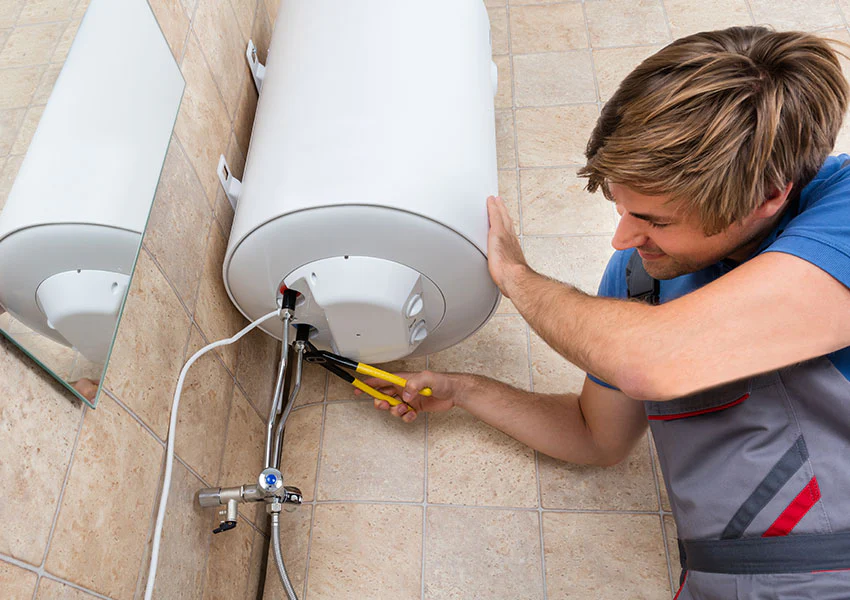Step-by-Step Steps to Caring for Your Home's Hot Water System
Step-by-Step Steps to Caring for Your Home's Hot Water System
Blog Article
The content which follows about How to Maintain Your Water Heater & Prolong its Life is exceedingly informative. You should check it out.

Warm water is crucial for day-to-day convenience, whether it's for a revitalizing shower or cleaning meals. To ensure your warm water system runs efficiently and lasts much longer, normal maintenance is key. This article provides practical pointers and understandings on just how to preserve your home's warm water system to prevent interruptions and expensive repair services.
Intro
Keeping your home's warm water system may seem challenging, but with a few simple actions, you can guarantee it runs smoothly for years to come. This overview covers whatever from comprehending your hot water system to do it yourself upkeep suggestions and knowing when to call in specialist assistance.
Significance of Maintaining Your Warm Water System
Routine maintenance not only extends the life-span of your hot water system but additionally guarantees it operates efficiently. Disregarding maintenance can lead to lowered effectiveness, higher power expenses, and even early failure of the system.
Signs Your Warm Water System Requirements Upkeep
Understanding when your hot water system requires interest can prevent significant problems. Keep an eye out for indications such as inconsistent water temperature level, unusual sounds from the heating unit, or rusty water.
Purging the Water Heater
Purging your water heater gets rid of debris buildup, enhancing efficiency and lengthening its life.
Checking and Changing Anode Rods
Anode rods protect against rust inside the container. Checking and changing them when worn is crucial.
Complicated Issues Needing Specialist Help
Examples consist of major leakages, electrical issues, or if your water heater is constantly underperforming.
Routine Expert Upkeep Advantages
Specialist maintenance can consist of thorough assessments, tune-ups, and making certain compliance with safety and security standards.
Checking and Readjusting Temperature Setups
Readjusting the temperature level settings guarantees optimum performance and safety.
DIY Tips for Maintenance
You can do a number of upkeep jobs on your own to maintain your hot water system in top problem.
Looking for Leakages
Regularly examine pipelines and connections for leaks, as these can cause water damages and greater expenses.
Comprehending Your Warm Water System
Before diving into maintenance jobs, it's helpful to understand the fundamental parts of your warm water system. Generally, this includes the water heater itself, pipes, anode rods, and temperature level controls.
Month-to-month Maintenance Tasks
Regular regular monthly checks can assist capture small concerns before they rise.
Examining Stress Alleviation Valves
Testing the pressure relief valve ensures it works properly and stops too much pressure accumulation.
Protecting Pipelines
Protecting warm water pipelines lowers warmth loss and can conserve power.
When to Call a Specialist
While do it yourself maintenance is advantageous, some concerns need expert proficiency.
Conclusion
Normal upkeep of your home's warm water system is vital for efficiency, long life, and price savings. By following these pointers and understanding when to seek expert help, you can ensure a trusted supply of warm water without unforeseen disruptions.
Water Heater Maintenance Tips
Test the TPR Valve
Shut off the power and the cold-water supply valve. Place a bucket under the pipe connected to the temperature-pressure-release (TPR) valve on the top or side of the tank. (This valve opens if the tank pressure gets too high.) Lift the valve’s tab to let some water out, then let go. If water keeps flowing, drain the tank partway, unscrew the old valve with a pipe wrench, and install a new one. Check the Anode Rod
Put a hose to the tank’s drain cock and let out a few gallons of water. Now fit a 1 1/16-inch socket onto the rod’s hex head on top of the heater (or under its top plate) and unscrew the rod. If it’s less than ½ inch thick or coated with calcium, buy a new one, wrap its threads with Teflon tape, put it back in the tank, and tighten securely. Use this segmented rod if headroom above the tank is limited. Drain the Tank and Wash Out Sediment
Drain the remaining water in the tank into the bucket, then stir up the sediment on the tank’s bottom by briefly opening the cold-water supply valve. Drain and repeat until clean water comes out of the hose. Close the drain cock, refill the tank, and turn its power back on. Adjust the Temperature
Find the temperature dial on the side of the tank and unscrew its cover. Adjust the dial to 120 degrees using a flathead screwdriver. For every 10 degrees the temperature is lowered, you can expect to save up to 5 percent in energy costs. Turn the water heater off or the thermostat down to its lowest setting if you plan to be away from home for more than three days. Insulate the Pipes
Buy some self-sticking 3/8-inch-thick foam pipe insulation that matches the pipes’ diameter. Slide the foam over the hot-and cold-water pipes as far as you can reach. Insulating the cold-water pipe prevents condensation in summer. Peel the tape and squeeze the insulation closed. If the pipe is 6 inches or less from the flue, cover it with 1-inch-thick unfaced fiberglass pipe wrap. https://www.thisoldhouse.com/plumbing/21016402/how-to-maintain-a-water-heater

We hope you enjoyed our piece on How to Maintain a Hot Water Heater in a Few Simple Steps. Thanks a ton for taking the time to read our posting. Be sure to pause to promote this article if you enjoyed it. Thanks so much for going through it.
Website Report this page